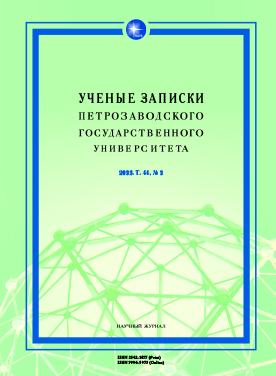ОБЩЕСТВЕННОСТЬ РОССИИ О ЦЕРКВИ И ГОСУДАРСТВЕ В ПЕРВЫЕ МЕСЯЦЫ ПОСЛЕ ФЕВРАЛЬСКОЙ РЕВОЛЮЦИИ
RUSSIAN PUBLIC OPINION ABOUT CHURCH AND STATE IN THE FIRST MONTHS AFTER THE FEBRUARY REVOLUTION
Author(s): Irina V. VorontsovaSubject(s): Cultural history, Diplomatic history, Economic history, Ethnohistory, History of ideas, Political history, Politics and religion, Pre-WW I & WW I (1900 -1919)
Published by: Петрозаводский государственный университет
Keywords: church and state; February Bourgeois Democratic Revolution; church-state interaction model; separation of church and state; 1917;
Summary/Abstract: The Revolution in February of 1917 gave an opportunity to fulfill the long-standing request of the Russian Orthodox Church for independence from the state. Cultural, church and public figures started a discussion about the new status of the church and models of interaction between the church and the authorities, which revealed the readiness of the enlightened circles of Russian society for the separation of church and state. The objective of the article was to analyze all the models of church-state relations proposed in the first half of 1917 and to track the evolution of the request. The purpose of the article was to answer the question, what models of church-state relations were presented in the first half of the year, and how the emphases and priorities were set. The answer would help to suggest that the decree of the Council of People’s Commissars on the separation of church and state and the separation of school and church (1918) only consolidated the internal readiness of many people to make religion a private matter of citizens, with the Orthodox Church being only one of public organizations. Today, it is important to restore religious consciousness in society as a guarantor of social stability, morality and traditional ethics, so, there is a search for mechanisms of interaction between the church and state structures. This indicates the need to address the question of what contributed to the destruction of the church-state union that existed before 1917. The sources were books and articles of cultural, public and church figures published in the first half of the XX century. The study methodology included the problem-based chronological method, the genetic historical method and narrative analysis. The analysis of the content of the proposed church-state interaction models in republican Russia of 1917 showed that from March to June the theocratic model of the early century disappeared from public view. It also confirmed that during the discussion the request for church independence was replaced with the idea of the complete separation of church and state with the gradual expulsion of church beyond cultural and social boundaries
Journal: Ученые записки Петрозаводского государственного университета
- Issue Year: 44/2022
- Issue No: 2
- Page Range: 47-55
- Page Count: 9
- Language: Russian

